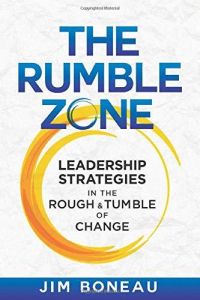Join getAbstract to access the summary!

Join getAbstract to access the summary!
Jim Boneau
The Rumble Zone
Leadership Strategies in the Rough & Tumble of Change
Ignite, 2020
What's inside?
How is a drum circle like working in an organization?
1×
Log in to listen to the audio summary.
Recommendation
Most people associate drum circles with the counterculture and rarely think of them in relation to how their corporations function. However, drum circles can build emotional and energetic connections among people, says drummer and organizational change expert Jim Boneau. The energy of the drum circle can provide a powerful transformational metaphor for organizational change. All of that happens in the “rumble,” a time of chaos and change.
Summary
About the Author
Jim Boneau leads drum circles and facilitates organizational change.
Learners who read this summary also read
Book
Book
Book
Book
Book

















Comment on this summary